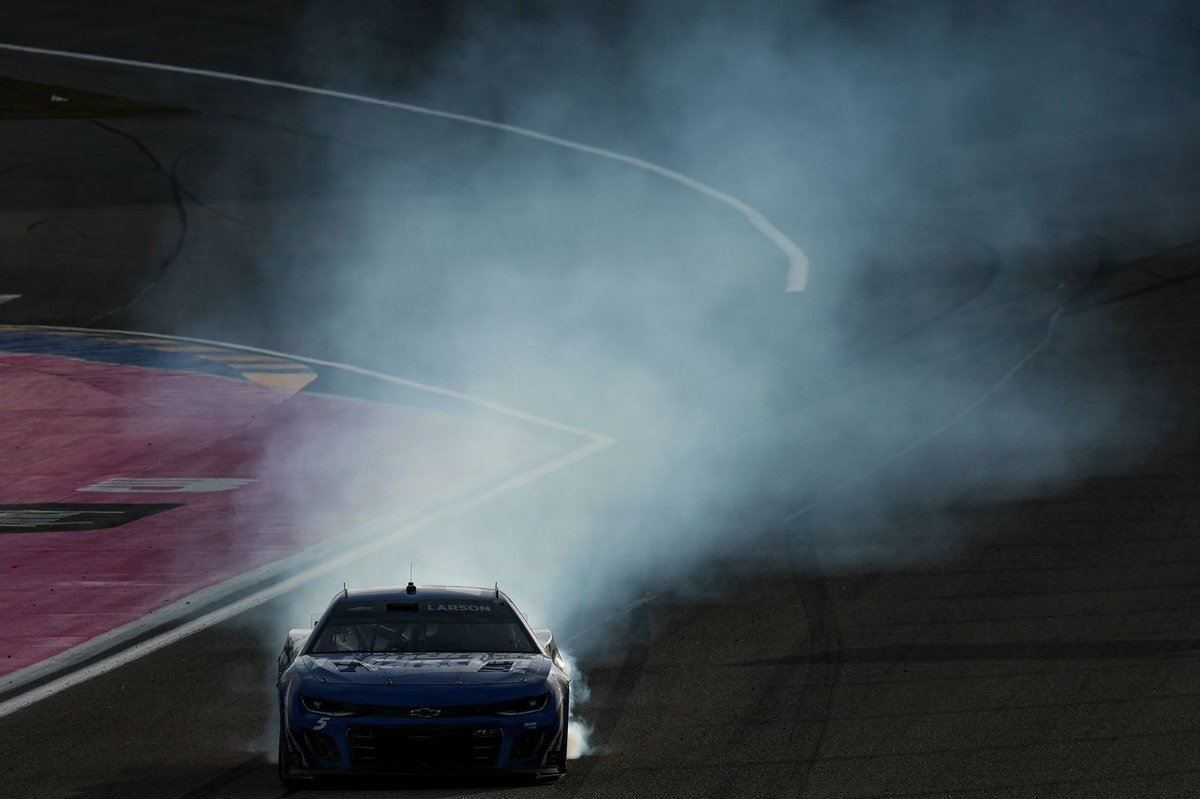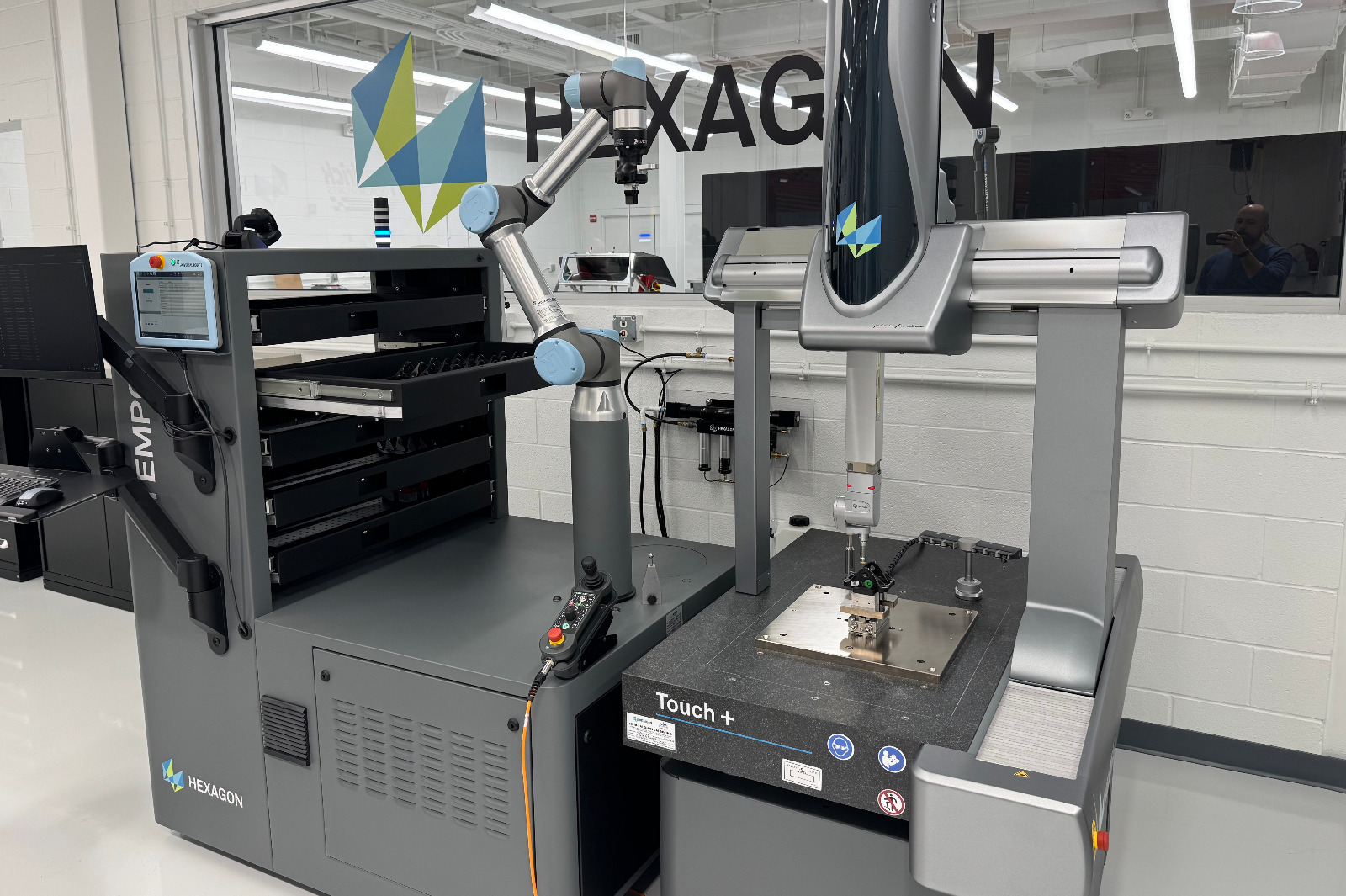
The NASCAR season kicked off this 12 months with a race on the historic Bowman Gray Stadium, which had not seen a NASCAR Cup Collection race since 1971. Whereas the car parking zone paddock behind the fieldhouse hearkened again to these early days of inventory automobile racing, some 40-plus years earlier than, the vehicles within the storage that day have been removed from those who might need been assembled within the yard garages of the Seventies.
The variations have been additional obvious in my time spent with Hendrick Motorsports only a few days later. Getting into a store on the Hendrick campus already appears like being granted entry to NASA’s manufacturing facility — full with pristine epoxy flooring and chrome steel plates laid out for automobile meeting (somewhat than rockets). And as you journey deeper into the store you will discover the metrology lab which homes an array of robots which are measuring the most effective elements for a automobile all the way down to the thousandths (0.000) to be used of their subsequent set of vehicles for the subsequent race.
You shortly notice constructing a race automobile is nearly like constructing a rocket, all to search out what little little bit of a bonus you’ll be able to achieve in opposition to your opponents and rivals.
Constructing rockets… on wheels
Round 85% of the elements which are used to construct a NASCAR Cup automobile should come from a single-source provider. Groups are required to make use of these elements as-delivered from the provider. Nevertheless, they’re allowed to decide on how they mix elements throughout meeting and that is the place efficiency beneficial properties may be discovered.
In line with Hendrick Motorsports vp of competitors Chad Knaus, that is key to discovering pace.
“They wish to have a set of tolerances that everyone has to function inside and it’s as much as us to take these tolerances, stack them up in a manner that creates efficiency, no matter that metric could also be that we decide is crucial efficiency enhancer for that monitor and apply it. Whether or not that be weight, whether or not that be geometry, whether or not that be form. There’s one million methods to do this and every race monitor is exclusive by which one you have to apply or how you have to apply it and we do this with all of this Hexagon tools that we’re very lucky to have.”
As an example, every NASCAR automobile quantity is allotted a set of main chassis items: seven heart sections, ten entrance clips, and ten rear clips. So, a 4 automobile workforce like Hendrick Motorsports, has to maintain up with measurements for over 100 of those items and the way the entire different particular person parts that bolts to them will stack up. That’s the place Knaus sees the most important efficiencies in utilizing a few of this automated measuring tools.
“It helps us predict the place we really feel like geometry shall be as soon as we put the parts collectively after which after we put the parts collectively we are able to return and reaffirm that our math meets actuality. We do this with each single automobile, each single week, so the duty as you’ll be able to think about is fairly daunting.”
Considered one of Hendrick’s workforce members demonstrates Hexagon’s Absolute Arm
Picture by: Bozi Tatarevic
Measuring these elements begins out with Hexagon, an organization that particularly builds robots for a majority of these endeavors, and its Absolute Arm — a versatile gadget {that a} technician can use to create an correct CAD mannequin of any given half utilizing contact probing and laser scanning. Giant elements like the middle part are probed and scanned as quickly as they arrive in and added to their elements database. NASCAR permits for a tolerance of 0.150 inches of their at-track inspection scans. Hendrick is ready to obtain an accuracy of below 0.010 inches of their store scans and that room is what permits them to assemble elements proper on the sting of guidelines to maximise efficiency.
However the true efficiencies present up as soon as we get deeper into the store, on the metrology lab. This newly launched lab is supplied with robotic scanners that require little or no intervention and may scan parts like suspension uprights or brackets robotically.
A Hexagon Tempo robotic with a movable arm that may choose up elements sits in a single nook of their metrology lab and is loaded with drawers of management arm mounting brackets. I watch because the Tempo opens a drawer after which makes use of an arm to select up one in all these mounting brackets and place it on the Contact+ coordinate measuring machine (CMM) that was connected to it. The Contact+ recognized the bracket and instantly grabbed a probe from its aspect and began measuring.

The Hexagon Contact+ in motion measuring one of many Hendrick Motorsports’ elements.
Picture by: Bozi Tatarevic

A better view of the half being probed by the Hexagon Contact+ robotic for measurements
Picture by: Bozi Tatarevic
The output from that measurement begins filling in on a close-by display screen. As soon as the bracket iss measured, the robotic arm picks it up and locations it again within the drawer. After the entire brackets within the first drawer are measured, the robotic arm closes the drawer and opens the subsequent one. The one intervention required from a technician is loading the entire drawers earlier within the day. As soon as the entire brackets are measured, their dimensions are exported from the machine and right into a database that feeds a wide range of instruments for Hendrick engineers and mechanics. Crucial of these is their simulation software program which permits them to construct a automobile nearly to a particular physique and suspension measurements.
From digital to actuality — a brand new, sooner automobile
A few thousandths of an inch of distinction between any of the 2 brackets measured from these scans, can result in a suspension geometry that equates to hurry on monitor.
So, these dozens of suspension mounting brackets at the moment are accessible to the engineer that’s nearly constructing a automobile for a particular monitor. All the measured elements are pulled from the database and as soon as the automobile is absolutely nearly constructed, the knowledge may be shared with mechanics to construct the real-world automobile.
Elements are recognized by QR codes and serial numbers, making it straightforward for the mechanics to determine them. They’re tasked to assemble the vehicles on these massive chrome steel plates the place as soon as their work is completed, they’ll use one of many 33 Hexagon Absolute Arms round their facility to measure the assembled automobile and ensure it matches the digital mannequin. As soon as your complete automobile has been measured, the software program will present any variations which are then investigated and introduced as much as spec (if mandatory). It’s a completely tech-savvy method if you notice aligning race vehicles was historically completed with issues like strings or lasers. However at Hendrick, they rely solely on the Absolute Arms to confirm these tight tolerances. Any extra modifications to the suspension are merely verified by rescanning these suspension parts.

One of many drawers crammed with elements to be scanned at Hendrick Motorsports.
Picture by: Bozi Tatarevic
Racing the NASCAR Subsequent Gen automobile for a number of years has resulted in a group of obtainable elements for Hendrick and with the ability to precisely catalog them of their database is a part of what permits them to constantly construct quick vehicles. Not solely do they catalog new elements, however additionally they rescan those self same elements as soon as the race vehicles are torn down after a race. This not solely permits them to maintain a big assortment, however can even reveal if a component is broken or out of tolerance after it has seen the monitor.
Whereas Hendrick Motorsports has an in depth database of elements from years of scanning all the pieces made accessible to them, the job isn’t over fairly but. New robotic instruments, delivered final fall, have required one other spherical of scanning. Hendrick Motorsports’ high quality management supervisor Roy Crump shared with Motorsport.com throughout my go to, “For the final two or three months, we’ve been attempting to measure as many elements as we are able to simply to confirm what now we have as a result of like I stated, up to now we have been utilizing two guys to measure with the Romer arms. So, remeasuring all the pieces now we have in our stock. Simply understanding what now we have now. Simply to a manner higher diploma than what we ever thought we’d have. And it simply helps construct the boldness of what we’re placing collectively.”
Along with these 33 Absolute Arms, Hendrick additionally makes use of seven CMMs and 13 scanners from Hexagon and continues to develop these capabilities with the launch of their new Hexagon Metrology Lab. With all this expertise at their disposal, it’s probably not shocking why a workforce like Hendrick does so nicely in the case of race day.
On this article
Bozi Tatarevic
NASCAR Cup
Hendrick Motorsports
Be the primary to know and subscribe for real-time information electronic mail updates on these subjects
Subscribe to news alerts
Trending Products




